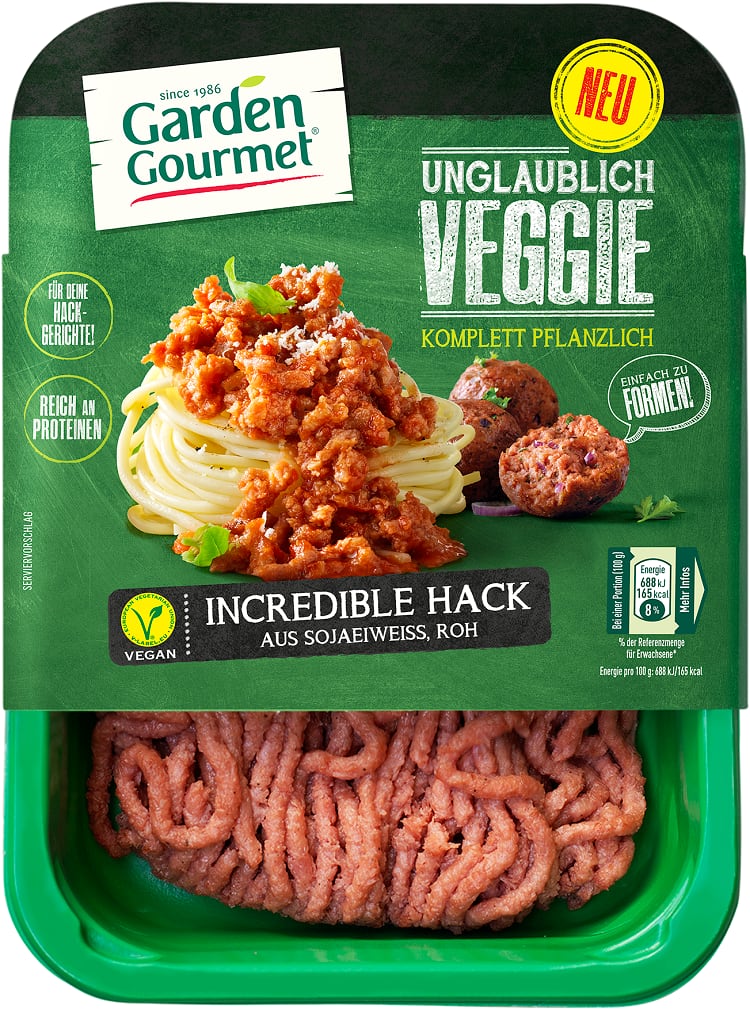Reducing meat consumption in favour of plant-based foods can help tackle a great number of issues, including global food security and climate change.
It is widely acknowledged that the production of legumes – be it lentils, green peas, French beans, chickpeas or soybeans – for example, is more efficient in terms of resources required vs calorie and protein output. Yet, as it stands, approximately 80% of agricultural land remains devoted to livestock farming.
In terms of CO₂ emissions, livestock farming has a significant carbon footprint – accounting for approximately 14.5% of human-induced greenhouse gas emissions.
According to the authors behind a new study, due for publication in industry journal Appetite later this year, the most climate friendly supply chains are built on legumes, and the least friendly are built on red meat.
Substituting meat with legumes is therefore one key way food consumption can become more sustainable. However, the team of researchers from Germany and New Zealand noted, studies to date have largely focused on consumers’ willingness to reduce meat consumption, rather than the specific substitution of legumes themselves.
“In Western countries, meat consumption is stagnating,” Dominic Lemken from Germany’s University of Goettingen told FoodNavigator. “With meat substitution at an early stage – meaning that most consumers are not in the practice of swapping out animal protein for plant-based alternatives – there is still a lot to learn about consumer preferences on how a lower meat consumption might be acceptable.”
Lemken is leading a group of researchers that advocate for a ‘less but better strategy’, which aims for higher quality and reduced meat quantity. “Against this background, we were curious to learn more about potential pathways to a moderate meat consumption,” he said.
Comparing ‘geographically’ diverse Germany and NZ
In order to evaluate consumer reactions to legume-based meat substitution, the researchers – based in Goettingen and at New Zealand’s University of Lincoln – conducted a two-country analysis. A total of 633 consumer survey samples were analysed from Germany, and 455 from New Zealand.
The study acknowledged that consumers have three main options when substituting meat with legumes: Consumers can either replace meat with legumes, use processed legumes as an ingredient in processed foods, or use processed legume products that explicitly intend to substitute meat.
Per the findings, more than half of the consumers said they had no intention to use processed legumes or replace meat with legumes.
Within a more in-depth cluster analysis, the study revealed a cluster appeared open to considering processed legume products, if they were not marketed as an alternative to meat. The study also revealed that although they are not in the habit of consuming them regularly, many consumers in New Zealand are open to using meat substitutes made from legumes.
And finally, a cluster group said they would prefer to directly substitute meat with specific legumes, rather than consuming highly processed products.
“In NZ and Germany, a similar share of consumers might be open to substitute,” concluded the lead author. Where the reactions differ, however, was in preference for meat substitutes. In NZ, where meat prices are higher than in Germany, these consumers predominantly prefer processed meat substitutes than other substitution options, he explained. Whereas such consumers in Germany often seek other options, such as tofu or reduced portion sizes.
Potential for authentic food boom?

So what can the food industry take from this? Looking beyond the survey figures, Lemken and his team delved into how each consumer segment could be addressed. Following up with the study lead, Lemken told FoodNavigator that certain aspects of this analysis could be of interest to those in the food production space.
“For example, we often hear that food manufacturers recognise that flexitarians are the main consumers for processed meat substitutions, but some flexitarians are not into products that mimic the taste of meat,” he explained. “We have also seen [this] for vegetarian consumers.”
Therefore the market for traditional or authentic food products, such as falafel and tofu, could be a target for innovation. Such markets are “probably open for new product varieties and might be more appealing to those consumers”, he told us.
With regards to the share of consumers that are open to meat substitutes in NZ, but reject products that mimic meat, Lemken speculated that local manufacturers will need to compete on price and taste. “They will thrive if they can compete on price and taste with [conventional] meat products.”
Source:
Appetite
‘More room for legume – Consumer acceptance of meat substitution with classic, processed, and meat-resembling legume products’
Due for publication December 2019
DOI: https://doi.org/10.1016/j.appet.2019.104412
Authors: D. Lemken, A. Spiller, B. Schulze-Ehlers




